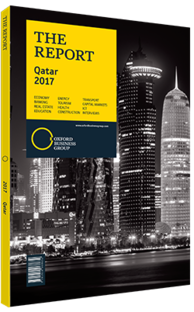Essa bin Hilal Al Kuwari, President, Qatar General Electricity and Water Corporation (Kahramaa): Interview

Interview: Essa bin Hilal Al Kuwari
What potential is there for renewable energy to play a bigger role in the country’s energy mix?
ESSA BIN HILAL AL KUWARI: Kahramaa is researching and preparing renewable energy policies with the Ministry of Energy and Industry. These are set to be complete by the end of 2017, and will create the framework for Kahramaa’s relationship with its customers and stakeholders, as well as encouraging the use of renewable energy.
In addition, Kahramaa is preparing a 200-500-MW solar power project, and expects completion in 2021. The National Programme for Conservation and Energy Efficiency (Tarsheed) has completed the specifications for solar heaters and panels, and cooperates with state institutions to encourage them to invest in renewable energy. Kahramaa is also researching wind power through Tarsheed.
What framework do independent water and power projects (IWPPs) and independent power producers (IPPs) operate under in Qatar?
AL KUWARI: Energy and water production facilities are fully privatised, with all production supplied to the Kahramaa national grids by IWPPs under power and water sale agreements. All IPPs are fully independent and privatised entities under Kahramaa regulations for the last 25 years, and we expect all IPPs will meet their contractual obligations.
The majority of our partners are highly reputable international firms, and since the privatisation process began they have shown themselves to be very efficient and to have high standards.
How effective is the current system in promoting sustainable use of power and water?
AL KUWARI: Tarsheed was implemented five years ago, and the programme has reduced per capita electricity and water consumption by 18% and 20%, respectively. This has been achieved through three dimensions – educational, technical and regulatory.
The educational dimension deals with behaviour, specifically targeting future generations by changing the mindset and alerting people to the importance of saving energy and water. To this end, workshops for schools and religious public speakers such as imams have been developed, while more than 40 memoranda of understanding have been signed with governmental and private firms in Qatar.
The technical dimension concentrates on conservation and energy efficiency programmes dealing with imported equipment, setting specifications for anything related to electricity or water consumption, such as air conditioning, heaters and lights.
Regarding regulation, a new law was introduced for dealing with any misuse of water or electricity, resulting in a penalty reaching up to QR20,000 ($5490).
Tarsheed is communicating with stakeholder groups and leveraging existing knowledge on energy efficiency and conservation. Work will continue to reduce per capita electricity and water consumption by 25% and 35%, respectively. This will be in addition to pursuing a 7% reduction in carbon dioxide emissions by 2022 through our projects and initiatives.
In addition, the Green Car Initiative is a joint effort between the Ministry of Transport and Communications, the Ministry of Energy and Industry, and Kahramaa. This will help ensure we reach the goal of 10% of all vehicles on the road being electric by 2030, and will help reduce carbon dioxide emissions.
How competitive are Qatar’s utility tariffs?
AL KUWARI: We started implementing a cost-reflective tariff strategy in steps, taking into account the social and economic impact. We have considered integrating many factors to ensure subsidies are given to the right sectors using the cross-subsidisation model. This will help us to gradually reduce the level of operating subsidies received from the state and to become a commercially sustainable utility.
You have reached the limit of premium articles you can view for free.
Choose from the options below to purchase print or digital editions of our Reports. You can also purchase a website subscription giving you unlimited access to all of our Reports online for 12 months.
If you have already purchased this Report or have a website subscription, please login to continue.

